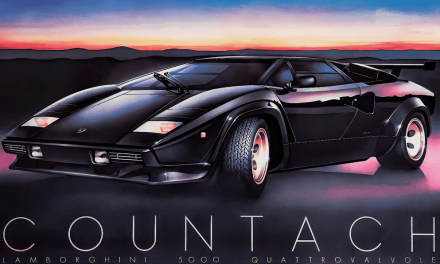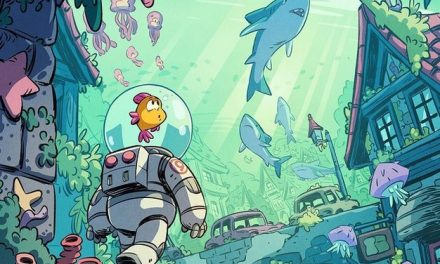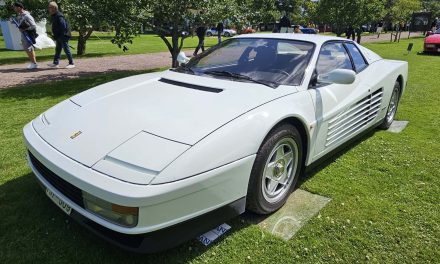“If it ain’t broken, don’t fix it.” You’ve definitely heard that saying before. If something works well, there might not be much reason to mess with it. In this article, we’re taking a look back at Itera—the Swedish plastic bicycle failure. At this point, you might already sense where this is heading. A bicycle. Made of plastic. A plastic bicycle. You can hear it yourself, right?
 A bold beginning: The ambitious vision behind Itera – The plastic bicycle
A bold beginning: The ambitious vision behind Itera – The plastic bicycle
Itera (an acronym for Industriell och teknisk rationalisering, or Industrial and Technical Rationalization) was an exceptionally ambitious Swedish industrial project that began in the late 1970s.
A Golden Age for Swedish Bicycle Sales
During the 1970s, bicycle sales in Sweden soared, with plenty of attractive models to choose from. Swedish brands like Crescent, Monark, and others successfully stocked local bike shops with their offerings.
The Steel Bicycle: Tried and True
Traditional bicycles at the time were heavy and made of steel, but they got the job done. Riding a regular bike worked perfectly well, especially if you were gliding along on Crescent’s iconic World Champion model, with its sleek orange finish and drop handlebars.
Itera’s radical rethink: A plastic bicycle
For some reason, Itera grew tired of the status quo and set their sights on rethinking the bicycle entirely. Their idea? A bike made of plastic. To put it mildly, this was thinking outside the box.
Itera AB’s bold mission: Building the world’s first plastic bicycle
Itera AB, the company responsible for the concept and product development, boldly aimed to create the world’s first plastic bicycle. Their vision promised that cyclists, pedaling on these new plastic bikes, would “ride their way out of the Iron Age.” The design focused on making the bike lightweight, maintenance-free, and rustproof—qualities meant to outshine traditional metal bicycles. With unshakable confidence, Itera launched an advertising campaign filled with over-the-top superlatives (we’ll get to that shortly).
Ambitions set sky-high
Itera approached the project with boundless ambition. The company set an incredible goal: to produce 120,000 bicycles within the first year. Production kicked off in Vilhelmina, a small village in northern Sweden with a population of around 4,100 at the time. The project likely gave the entire community a significant economic boost, alongside rural development support and government funding.
Local production meets imported components
Two local companies in Vilhelmina handled the injection molding and assembly of the bicycles, while many of the components came from Swedish suppliers—a welcome boost for the national economy. However, Itera relied on foreign manufacturers for critical parts such as gears, pedals, and brakes.
 Cyclists love lightweight bikes – not heavy plastic bicycles
Cyclists love lightweight bikes – not heavy plastic bicycles
If there’s one thing every happy cyclist appreciates, it’s a lightweight bike. Anyone who has ridden older bicycles, especially an old military bike, knows this firsthand. These “iron horses” weren’t exactly fun to pedal compared to today’s carbon fiber rockets—but back then, there wasn’t much of an alternative. That said, zipping along on a 13-kilo Crescent wasn’t too bad. Now, imagine what it would be like with a plastic bicycle—one that should be significantly lighter and more aerodynamic. It sounded like a dream for cyclists.
Bold marketing and over-the-top promises
When Itera’s marketing hit the newspapers and bike shops, they didn’t hold back. The advertising was aggressive and packed with superlatives—some of which bordered on outright lies. According to Itera, the bike was:
- “The perpetual motion machine—made of the same material as space rockets.”
- “Rigid and stiff.”
- “Instead of repairs and problems, you get a friend for life.”
- “New thermoplastics have been developed with better properties than metal—stronger, more durable, and more energy-efficient.”
And they signed off with this gem: “We feel satisfied and more than a little proud of the end result.”
The problem with a plastic bicycle
Plastic is cheap. It’s also a terrible material for building bicycles. Despite this, Itera made a not-so-smart decision at launch: they priced the bike as a premium product. Banking on its status as a “lifestyle product” and “technical innovation,” Itera was sold for 1,650 swedish kronor—a significant sum at the time and 25% more than a Crescent or Monark.
If it’s this expensive, the bike must be good, right?
To make matters worse, this launch came at a time when Swedish bicycle sales were already declining after a period of strong demand. The Itera came in colors like beige, mint green, and pale pink—certainly eye-catching (and yes, very ugly) — but the high price had consumers asking the obvious question: “If it’s this expensive, the bike must be good, right?”
A shocking first ride
When customers finally got their hands on their eagerly awaited plastic bicycles, many were in for a rude awakening. Despite being made entirely of plastic, the Itera weighed in at a hefty 16-18 kilos, depending on the model. In other words, it was ridiculously heavy. But the negatives didn’t end there—not by a long shot. I hate to be mean because I genuinely appreciate innovation, but the Itera was in hindsight a horrible idea. The bikes produced were shockingly bad compared to an ordinary bicycle. And yes, I rode one many years ago. I still remember that day vividly. It was awful in every conceivable way.
Wobbly, plastic, heavy, and unstable
The all-plastic design made the bike incredibly flimsy and unstable to ride. A heavy bicycle that wobbles down the road like a snake? No, thank you. It didn’t take long for Swedish cyclists to dub the Itera “the anaconda”. Unsurprisingly, the reviews were, to put it kindly, absolutely dismal.
The traffic light debacle
Sweden’s main television news show, Aktuellt, revealed an embarrassing flaw with the Itera. Traffic lights couldn’t detect the plastic bicycle because it wasn’t made of metal!Picture yourself stuck at a traffic light, waiting endlessly for it to change while nothing happens. People around you laugh as you stand there, helpless, on your painfully ugly, and clearly way to expensive bike.
The plastic bicycle became a short-lived dream: From ambition to bankruptcy
Itera planned to produce 120,000 bicycles, but the company only managed to manufacture 14,000 before going bankrupt. By 1985, the Itera story had reached its inevitable conclusion. The bike now stands as both a symbol of bold innovation and a colossal failure. Designers and marketers still use it as a case study to highlight the risks of introducing new materials and ideas to the market. Itera reminds us just how challenging it can be to turn ambition into lasting success.
But this plastic bicycle then became a quirky collectible
Like many quirky inventions, the Itera eventually found a second life as a trendy nostalgic item. Its awkward ugliness somehow makes it charming. Even though the company’s story ended abruptly, Itera bikes frequently pop up for sale online. I’d love to see one again someday—though I have no desire to own or ride one. There’s just something undeniably fascinating about this piece of history.
From Bike to… postage stamp?
Strangely enough, the Itera even earned a spot on a postage stamp—in Tanzania.
Best Regards Johan Åhlund – Thank you for visiting LegandsAndNostalgia.com
The photos in this article are borrowed from Stockholms Auktionsverk och Wiki.





